If you have a very small yard or garden space, growing dwarf fruit or ornamental trees would give you the best balance of beauty and greenery, without crowding the area too much. Let's have a look at the ways one can use them to make a garden impressive and elegant.
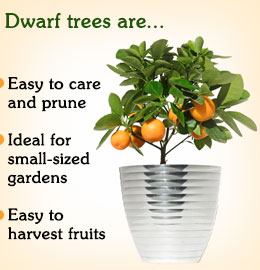
Most dwarf trees require very little space, i.e., around 8 sq. ft. Some of them―such as bonsais―can grow in less―even a large pot outdoors.Living in an urban area can be tough for anyone who likes gardening. With hardly any place to grow small vegetables or even potted plants, thinking of growing trees seems like a fantasy. Many homes only have a small strip of land near their fence, wall, or entrance. However, with advancements in horticulture, it is possible to grow your favorite fruit or ornamental tree in this limited space too. Dwarf trees are formed by combining two or more tree species to create a new variety that is small in size and may still be capable of bearing fruits.
One can easily purchase dwarf trees from nurseries, where they may also be known as miniature trees. These trees come in a few varieties, and a buyer must choose from them depending upon the climatic conditions in the region, price, and the amount of care that the trees would need.
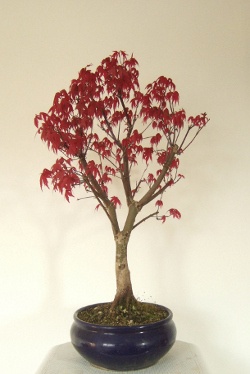
- Miniature Japanese Maple Tree
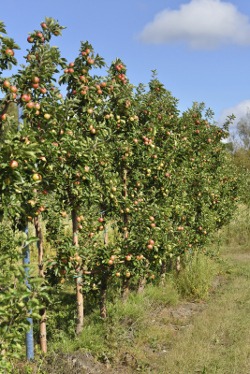
- Orchard of Dwarf Apple Trees
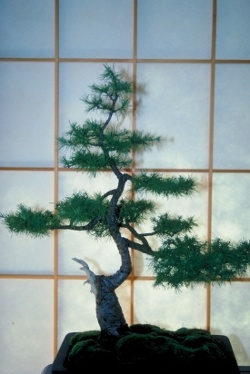
- Dwarf Larch Tree
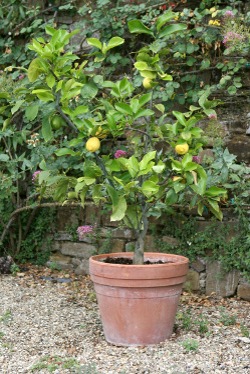
- Miniature Lemon Tree
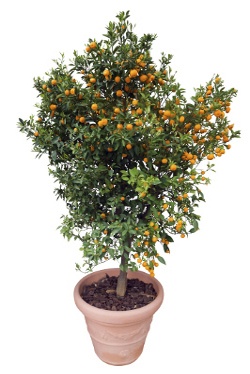
- Dwarf Orange Tree
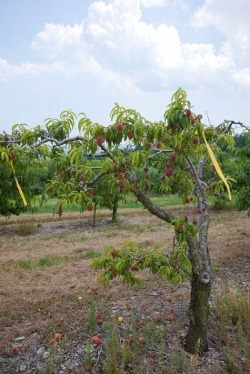
- Dwarf Peach Tree


What are Dwarf Trees?
As the name suggests, there is a major difference in size between regular trees and dwarf trees. While standard trees grow around 25 to 50 feet tall, dwarf varieties grow only around 10 feet in height. These trees are created by a horticultural method called grafting, where the root of a dwarfing tree (rootstock) is connected through a stem piece (interstem) of a dwarfing variety to the upper portion of the intended fruit or ornamental tree (scion wood). The quality of the tree and its produce depends on the combination of these elements.
Types of Dwarf Trees
Both fruit and ornamental dwarf trees usually come in three varieties: dwarf interstem, dwarf tree, and genetic dwarf. Let's see how they differ from the others.
- Dwarf Interstem: These trees are made by using two grafting procedures, the second one usually done a year after the first. This process is usually done for dwarf apple and pear trees. These trees require a lot of care, although they are slightly more resilient than the dwarf tree variety. The tree usually does not need staking, and is quite expensive owing to the long growing process required to prepare it.
- Dwarf Tree: This variety may or may not require a grafting procedure. However, they are quite weak, and therefore need staking, regular fruit harvesting, pruning, and a lot of attention from the gardener. Even a little neglect or weed infestation can kill the tree. These trees come in a wide variety, cherry, citrus, quince, etc.
- Genetic Dwarf: These trees are created by grafting the rootstock of a regular tree to the scion wood of a dwarf variety. They require the least amount of care; the roots need to be pruned only once in four years for the tree to thrive. They don't require staking either. They are available as miniatures, and can easily be grown in big pots. Apples, peaches, apricots, nectarines, and many other fruits can be harvested from trees such as these.
These trees ultimately save a lot of space, while providing a good amount of fruit. Or, if you go for the ornamental varieties, such as Japanese maples, dwarf larches, Persian ironwoods, weeping birch, dwarf firs, etc., they will make your garden elegant and breathtakingly beautiful.
Pros and Cons
Pros:
- Dwarf trees take up very little space, making them ideal for small gardens.
- Because of their small size, dwarf fruit trees are easy to harvest from, and do not require any special equipment.
- The processes to care for these trees are not time-consuming, and most varieties can thrive without complicated procedures.
Cons:
- Some dwarf varieties live much shorter lives than their regular counterparts.
- Buying these trees can be cost-prohibitive, due to their difficult grafting and growing process.
- Some varieties require special attention, and need a lot of time to maintain.
Dwarf Trees for Landscaping
When you are looking to create a beautiful landscape environment within your garden, dwarf trees are a good addition to the scene. Depending on the location of your residence, you need to decide on whether you would like evergreen dwarf trees like Mugo pines, Japanese white pines, and Hinoki cypresses, or deciduous ones like Japanese maples or hazelnut shrubs. Some of these plants can be used for ground cover due to their widespread foliage, while others give fantastic shapes in their branches and leaves, which add to the appeal of the garden.
To further enhance the look of the garden, flowering dwarf tree varieties are available as well. These trees are best grown in places that are exposed to a good amount of sunlight. Plants such as lavender twist redbuds, purple lily magnolias, weeping cherry trees, Siberian peashrub, etc., are beautiful flowering varieties. Although it will take some time to study your options and choose the correct combination, there is no doubt that the end result will be worth it.
Tips for Buying and Maintaining Dwarf Trees
Let us look at the various factors that one needs to keep in mind to successfully grow dwarf trees to their best.
- Make sure that the trees receive plenty of sunlight and adequate water.
- Take measures to prevent pests from attacking your tree. Fencing for rabbits and moles, and pesticides for insects are needed.
- Avoid planting the trees in areas that regularly accumulate frost, for a good fruit harvest.
- Some nurseries offer to create custom trees, with combinations of rootstock, interstem, and scion, to perfectly suit the conditions at your home. Take advantage of any such offers.
- Always choose a tree that has a higher hardiness level than the actual condition at your home. This will give your tree a better chance of survival in the garden
Dwarf trees give a pragmatic solution to those who want to grow their own fruits, or those who want to enhance the look of their gardens with ornamental trees, but have space restrictions around their home. Make an informed choice to get the best dwarf trees for your situation. Once you take care of the tree's needs, all you need to do is relax and enjoy the surroundings.






 Most dwarf trees require very little space, i.e., around 8 sq. ft. Some of them―such as bonsais―can grow in less―even a large pot outdoors.Living in an urban area can be tough for anyone who likes gardening. With hardly any place to grow small vegetables or even potted plants, thinking of growing trees seems like a fantasy. Many homes only have a small strip of land near their fence, wall, or entrance. However, with advancements in horticulture, it is possible to grow your favorite fruit or ornamental tree in this limited space too. Dwarf trees are formed by combining two or more tree species to create a new variety that is small in size and may still be capable of bearing fruits.
Most dwarf trees require very little space, i.e., around 8 sq. ft. Some of them―such as bonsais―can grow in less―even a large pot outdoors.Living in an urban area can be tough for anyone who likes gardening. With hardly any place to grow small vegetables or even potted plants, thinking of growing trees seems like a fantasy. Many homes only have a small strip of land near their fence, wall, or entrance. However, with advancements in horticulture, it is possible to grow your favorite fruit or ornamental tree in this limited space too. Dwarf trees are formed by combining two or more tree species to create a new variety that is small in size and may still be capable of bearing fruits.






